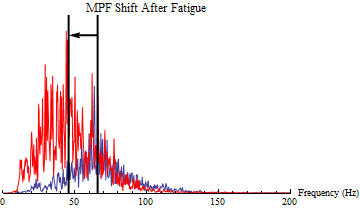Alleviation of Muscle Fatigue by SM
Fatigue is an important public health problem which causes serious disruption in overall quality of live, especially for athletes, soldiers, and heavy-duty workers. The situations become severe for the patients with different diseases. The underlying mechanism involving in muscle fatigue is reduction of Na and K concentration gradients due to the repeated firing of action potential.

In addition, it has been widely accepted that the Na/K pump activity is reduced during exhaust exercise due to insufficient ATP supply. There is a close correlation among the reduction in the Na and K concentration gradients, inactivation of the Na/K pumps, and reduced muscle excitability and peak tetanic force. Indeed, various ways can stimulate the pump functions. However, if ATP is insufficient to fuel the pump, no one can maintain the pump functions.
Electromyography (EMG) has been widely used to study fatigue, and shift of the median power frequency (MPF) which is related to the membrane conductance often functions as a marker of fatigue. The effects of synchronization modulation technique on muscle fatigue have been studied on human being by monitoring EMG. Each participant held a 15 lb. dumbbell with elbow maintained at a ~90° for an as long as possible period. The surface sEMG signal was continuously recorded by a BioAmp EMG device (ADInstruments). The forward modulation electric field and the single frequency electric field were applied to the biceps muscle of arm.
The power spectrum of the measured EMG before and after fatigue is shown in the figure above. The MPF shift become small (20%, N =11) in response to the forward synchronization modulation electric field application which accelerated the Na/K pumping rate, comparing to the control without the field application or the single frequency stimulation.
Selected Manuscript
- Mast J, Mirza Z, Chen W. 2015. Effects of the synchronization modulation electric field on muscle fatigue. [manuscript]